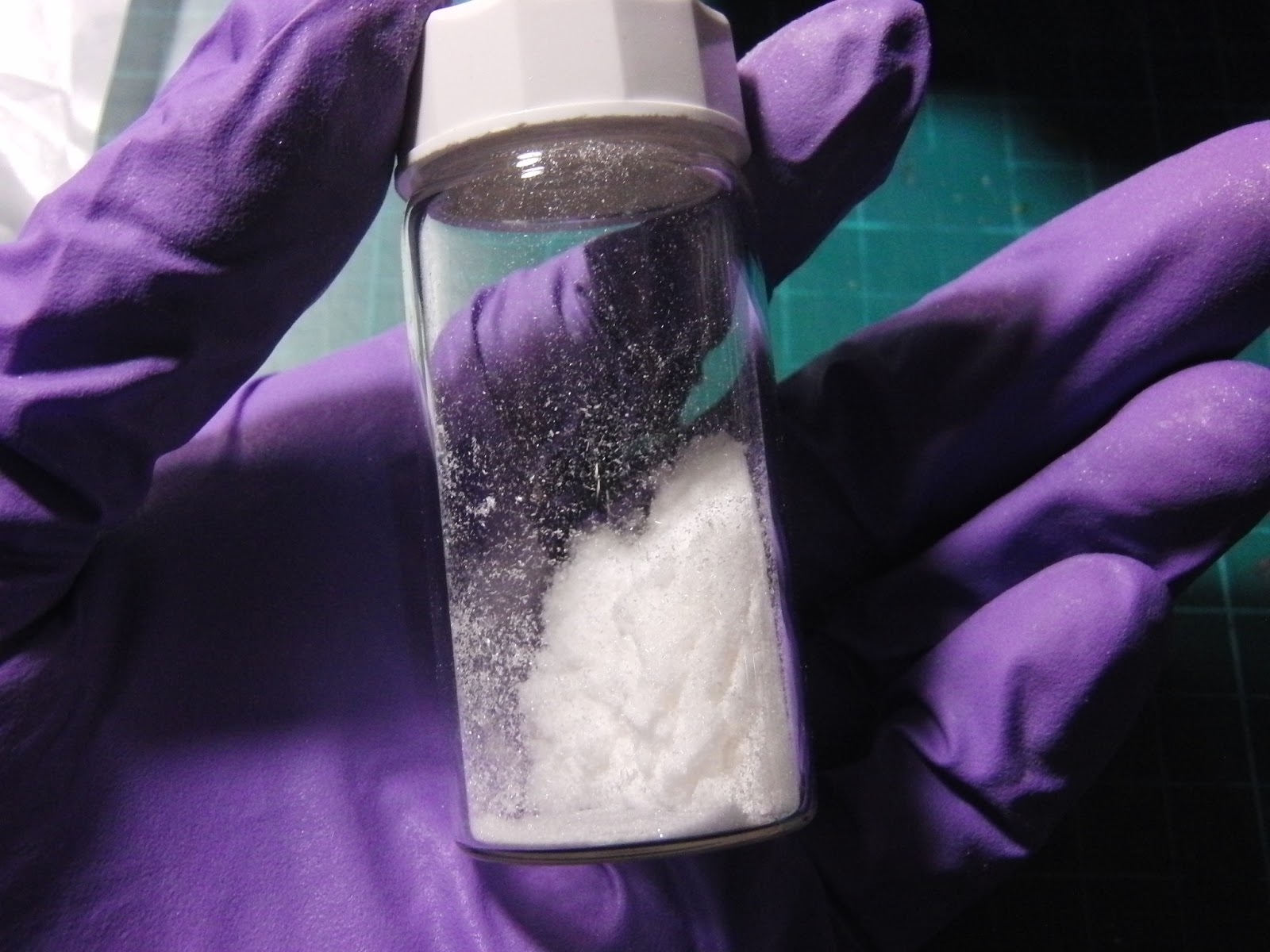Benzoin is the precursor of the antiepileptic
medicine, Dilantin (Phenytoin).
Benzoin is also a white crystal perfumery.
The DL-type is a hexagon monoclinic rhombic crystal. Both D-type and L-type are
needle-shape crystals.
In this experiment, a benzoin condensation
of benzaldehyde is carried out with a biological coenzyme, thiamine
hydrochloride, as the catalyst.
Reaction equation
Vitamin B1 is a coenzyme. It may
replace the extremely toxic substance, sodium cyanide, as the catalyst, is
benzoin condensation. The structure of Vitamin B1 is as fallow:
Mechanism
Step 1
Step 2
Step 3
Chemical
1.
Vitamin B1 hydrochloride:
1.20g
2.
Benzaldehyde: ~6.24g
3.
Ethanol 95%: 12mL
4.
Sodium hydroxide solution: 2.5M
4.0mL
Procedure
1.
Dissolve 1.20g thiamine
hydrochloride (Vitamin B1) into 4.0mL water in a 125mL flask.
2.
When Vitamin B1 is
dissolved, add 12.0mL 95% ethanol.
3.
Stopper the flask and cool the
solution with a ice bath, slowly add 4.0mL of cold 2.5M sodium hydroxide to the
flask, and make pH of the solution is about 10~11.
Vitamin B1 solution turns into yellow after added sodium hydroxide soludtion
4.
Rapidly add ~6.24g benzaldehyde to
the reaction mixture and sufficiently mix the solution. Stopper the flask and
allow it to stand at room temperature for 24 hours.
The appearance at the first
The appearance after 6 hours
The appearance after 9 hours
The appearance after 24 hours
5.
At the end of the reaction
period, the benzoin should have separated as fine while crystals.
6.
When the crystallization is
completed, collect the crude product by filtration. And wash is with some cold
water and ethanol.
The crude benzoin (still containing some Vitamin B1 and some NaOH)
7.
Recrystallize the product from
95% ethanol.
8.
Air dry the final product.
The final product should be white crystals
Notes
1.
Vitamin B1 exists in
the form of thiamine hydrochloride. It is stable in the acidic condition, but
it absorbs water easily, and it is a heat-sensitive reagent, the thiamine in
aqueous solution is oxidated easily by oxygen in the air. The rate of oxidation
may be accelerated by light and some ions such as cupric ion, ironic ion and
magnesium ion. It should be stored in a refrigerator. Since the thiazole ring
is broken easily in basic solution, both the aqueous solutions of thiamine
hydrochloride and sodium hydroxide should be cooled thoroughly with an ice bath
before use.
2.
The control of the pH value is
the key to the benzoin condensation of benzaldehyde. So the benzaldehyde used
for this experiment must be free of benzoic acid. The benzaldehyde must be
redistilled before use.
Experimental Record
Weight of benzaldehyde
|
6.11 g
|
Weight of benzoin after recrystallization
and air dried
|
1.69 g
|
Yield
|
27.7 %
|



















Greetings Lu Le, All of this work is very noble and honorable of you to perform. This effort, I'm sure, took a lot of time and energy. You are to be commended.
ReplyDeleteThank you very much! I will frequently post what experiments I'm doing in my college. Please share my Blogger with your friends.
DeleteThere is a permanent cure for HSV1&2 and Dr. easbnam herbal medicine is the perfect cure for herpes and I have used it and I was cured from HSV 2.The cure works perfectly with no side effects. Please I urge you to contact Dr. easbnam now through his email;dreasbnamrootandherbal1@gmail.com or what'sap +2348106600701 and he is capable of curing HIV/AIDS, HERPES, HPV, HSV1&2, COLD SORE, CANCER ,DIABETES
DeleteGot rid of herpes 1&2 completely, I started the treatment August 2022 for 14 days till now 2025 I have not had a single outbreak, All thanks to Dr. chalopa. Whats app +14482008706 ----E mail. (drchalopa@gmail.com)
DeleteWe are doing this same lab now
ReplyDeleteHa ha~ That's good~ The experiment is very interesting, isn't ?
DeleteLooks like you are 10 hrs behind CST in St.Louis lol 11:52am
ReplyDeleteOops ur ahead
ReplyDeletemay you please help me with the aim,introduction,literature survey,discussion,conclusion,results and calculations of this experiment
ReplyDelete